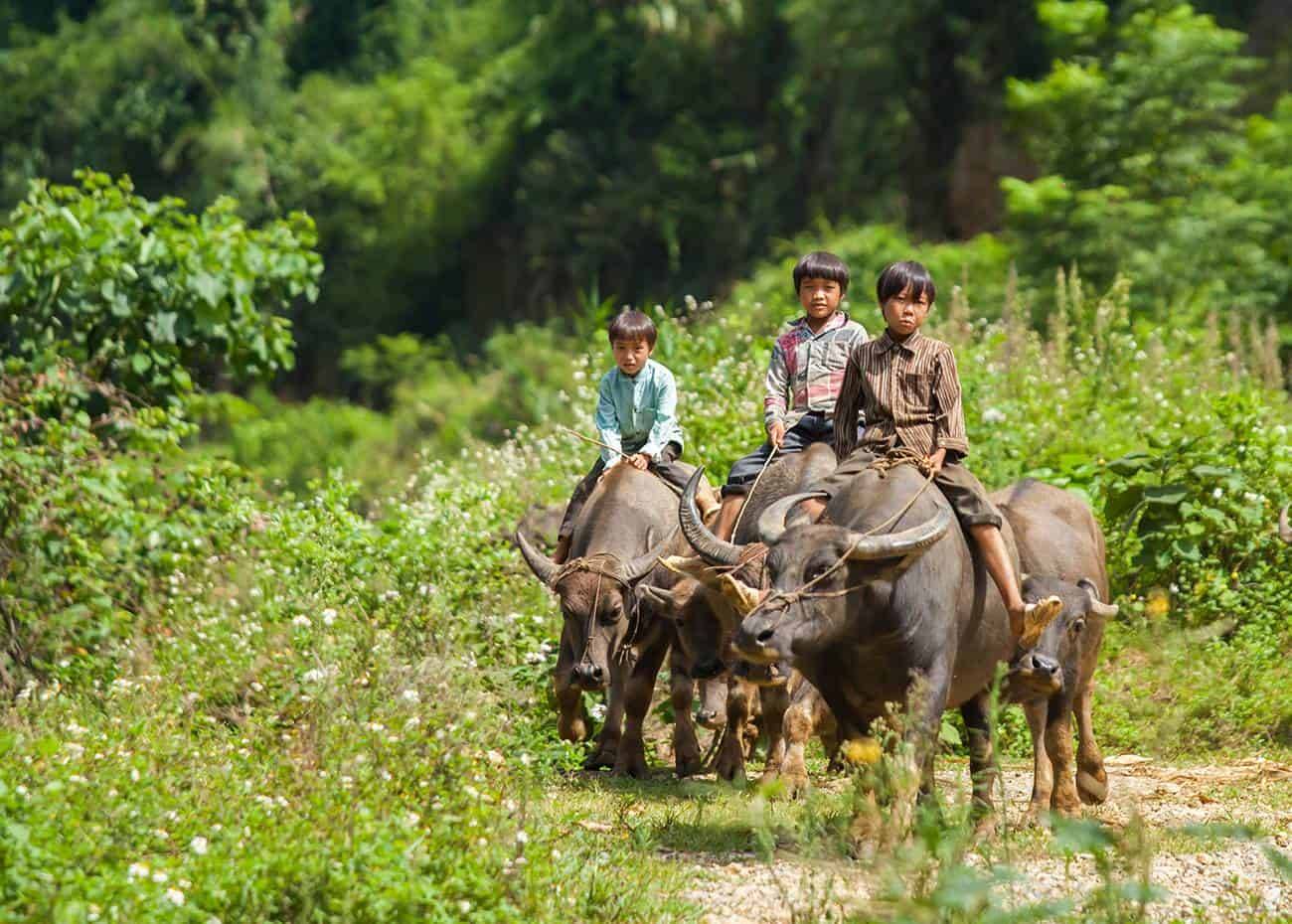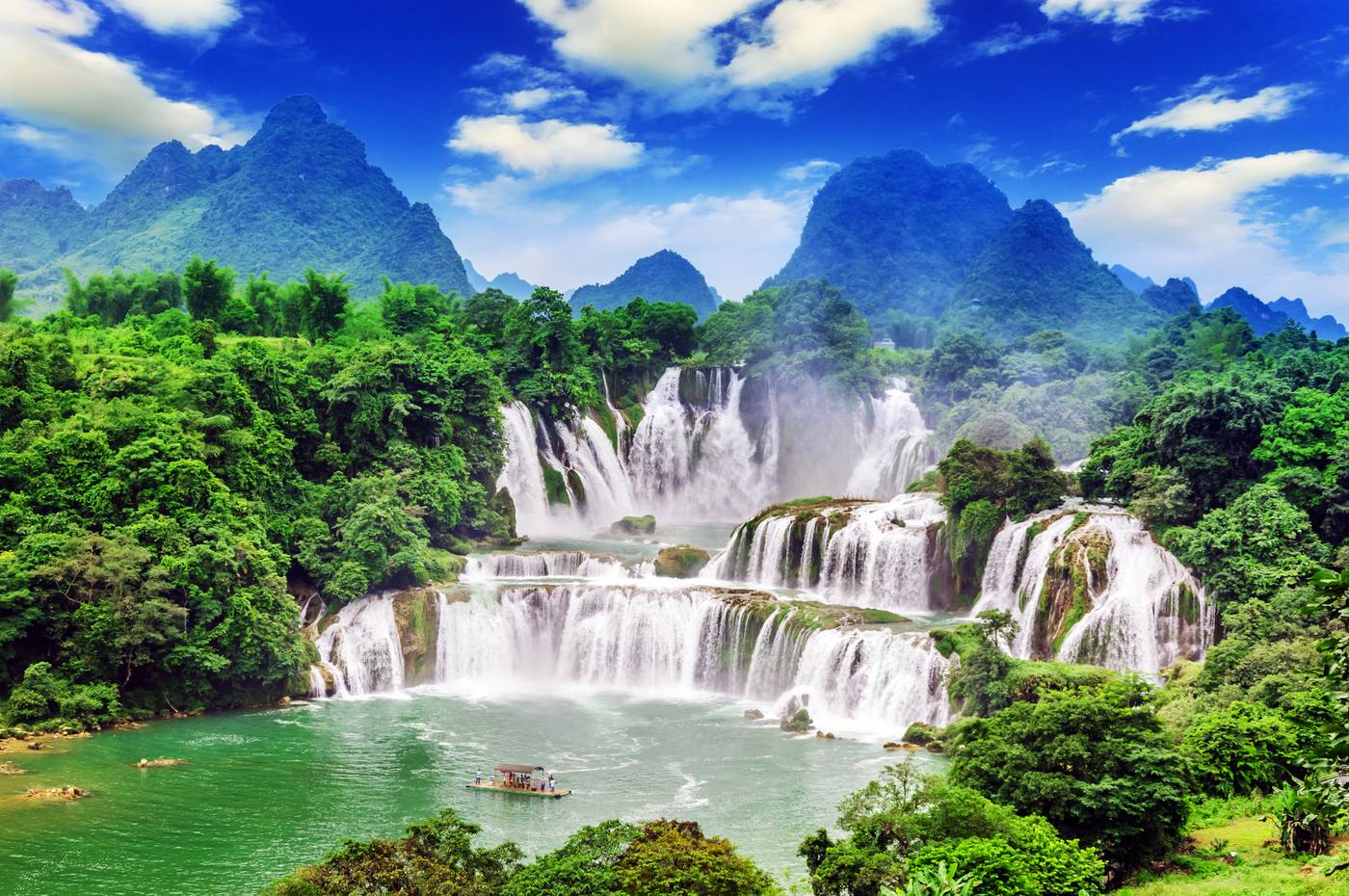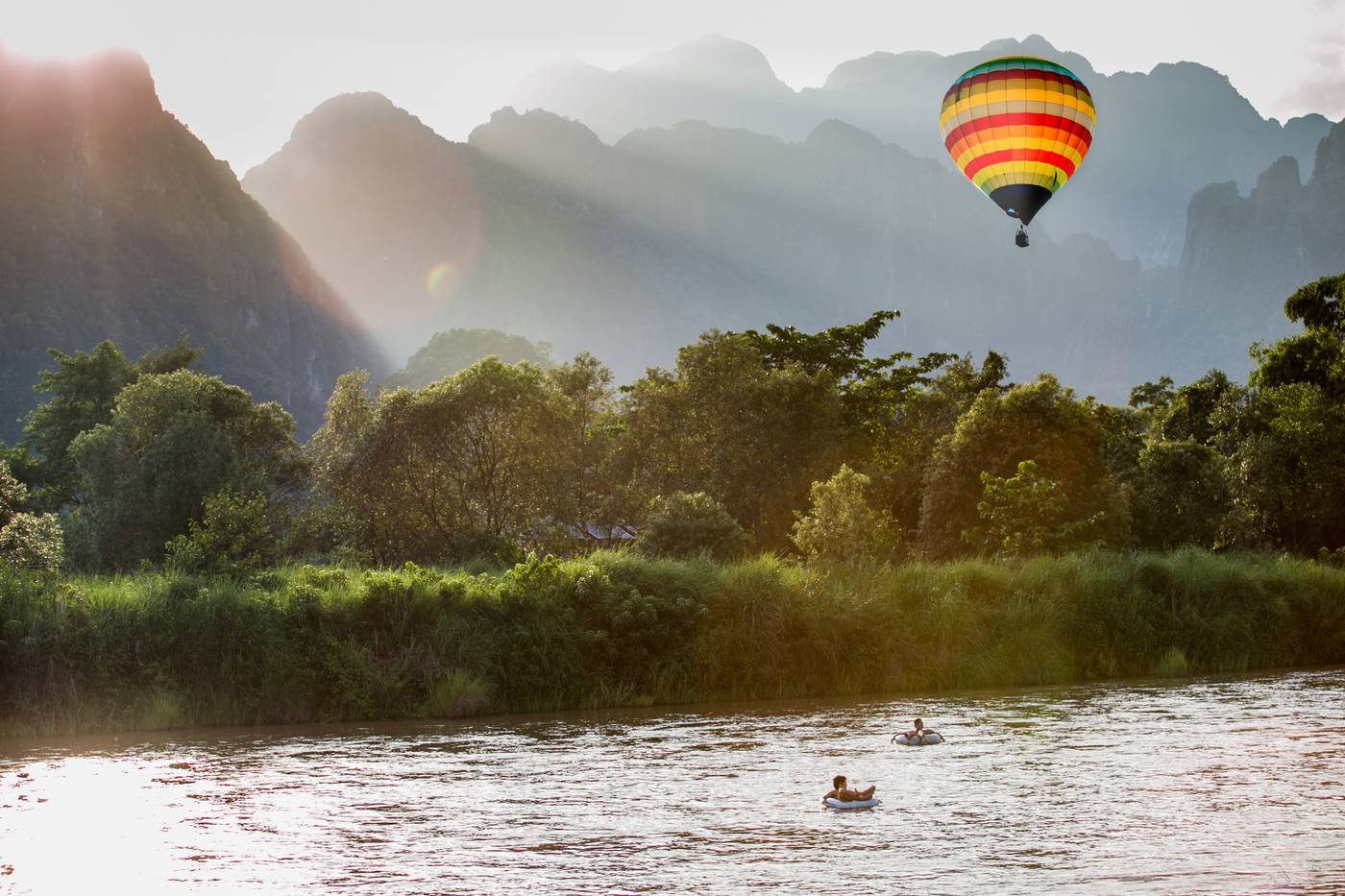
VISIT CAO BANG – NORTHERN VIETNAM`S BEST KEPT SECRET
Cao Bang province, sitting on the Chinese border, is a gorgeous gateway to scenic karst landscapes, secluded lakes, tribal villages, hidden caves and spectacular waterfalls. Ban Gioc Waterfall is the star of the show.
WHERE IS CAO BANG
To reach Cao Bang from Vietnam, you will need to arrive in Hanoi. That is the preferable way as for most of the travellers, it is much easier to obtain the Vietnamese visa compared to China.
Before you set out on the bumpy journey though, remember to plan as much as you can in the capital of Vietnam, where at least few people speak English. To reach the Ban Gioc Falls, you will need to head to the remote region of Cao Bang, right at the Chinese border, whose residents barely get to see any Western faces.
BAN GIOC WATERFALLS
Cao Bang province is hiding way too many surprises, but the highlight is undoubtedly Ban Gioc. The waterfall drops 30 m and it is separated into three falls by rocks and trees and its thundering effect of the water hitting the cliffs can be heard from afar.
It is the world`s 4th largest waterfall and it is located amongst glorious limestone formations and evergreen hills of the highlands of Northern Vietnam right on the international border between Vietnam and China.
NGUOM NGAO CAVE
Only walking distance from the falls, there is an astonishing cave to be visited for a small fee. Nguom Ngao Cave or “The Cave of Tigers” is more than 2 km long and it was formed 300 million years ago. There is a wonderful harmony between the stone and water; majestic caverns are filled with delicate rock formations, stalactites and stalagmites, pools and spooky sounds.
You will need to walk to the cave from the waterfalls which might take up to an hour in a very humid climate. However, it is totally worthwhile as, on the way to the cave, you will be passing by several ethnic villages and experience Vietnamese rural lifestyle in its truest form.
TRAVEL TIP
Deep in the mountains, yet not far from the town of Cao Bang, there is a small pretty lake to search around – Thang Hen. The lake gets particularly impressive during the rainy season when the visitors can hire a raft and explore the lake`s shores and rustic villages. It is not very much visited by the Westerners, but it has a big eco-tourism potential.
BA BE LAKE
Once you have decided to explore the region, another very interesting place is Bac Can, teaming with waterfalls, rivers, gorges, deep valleys, limestone mountains and caves. It is not easy to reach this remote area but travelling here makes an exciting experience with an opportunity to meet isolated ethnic communities.
Ba Be Lake is the largest freshwater lake in Vietnam situated amidst lush primaeval jungle that creates a kind of ghostly atmosphere. In fact, there are 3 lakes connected by large channels and best to be admired from a boat. When in Ba Be Lake, you must not skip the Widow Island – a small rocky islet in the middle of the lake, with ancient legends and fantastic photo opportunities.
DID YOU KNOW?
Babe Lake was ranked as one of the TOP 20 Most Beautiful Lakes on Earth, and indeed, its shades of emerald and blue can easily blow one`s mind away. Simple boats can be hired to take you around the lake.
BA BE NATIONAL PARK (WHAT TO SEE)
Apart from Babe Lake, there are many other natural attractions in the national park.
Dau Dang waterfall on Nang River is more than 1 km long and it offers pretty grandiose image. It is home to many rare fish species and a popular eco-tourism area for mainly Chinese visitors.
Thac Bac Falls are multi-layered ‘silver falls’ with lovely rock pools and natural beaches.
Fairy Pond, with its surreal blue colour and scenic limestone surrounding, is a secluded place of many legends and the ancient stories that can be listened to – the locals like to share them.
Hua Ma Cave – a hung cavern – is more than 700 m deep with spectacular features such as stalactites, Guanyin Buddha statue, terraced fields, stone gate, etc., and it is regarded as one of the most impressive caves in Northern Vietnam.
Na Phong Caves are the most visited as they used to be headquarters of ‘Voice of Vietnam’ during the French Indochina.
Lo Mo Cave is probably the most difficult to get in for rough terrain but dramatic scenery; with an underground river, rock formations, series of chambers filled with hanging stalactites. The cave is only accessible with a guide as an expedition.
Other favourite activities in the national park are rafting, kayaking, mountain biking and jungle trekking.
NOTE
Journey to Bo Lu (the gateway to Ba Be National Park) is long and rough. There are only very few simple guesthouses in the park and facilities are limited. You should take some extra time to travel in this scenic but isolated region.
WHEN TO TRAVEL
Best time to visit the region is March-May (dry and warm weather) or October-November for cooler and clear days. However, for the most spectacular views of rice fields in their full abundance visit Northern Vietnam in September, just before the harvest starts.
HOW TO GET THERE
Fly to Hanoi.
To get to Ban Gioc Waterfalls and the cave you will need to catch a bus to Cao Bang from Hanoi central bus station and then change for another bus to the waterfalls in Cao Bang.
To get to Ba Be National Park catch a bus from Cao Bang or Hanoi to Phu Thong where you will need to change the bus to Bo Lu Village (starting point to most of the attractions)
For all international flights check out www.skyscanner.com or www.momondo.com



















